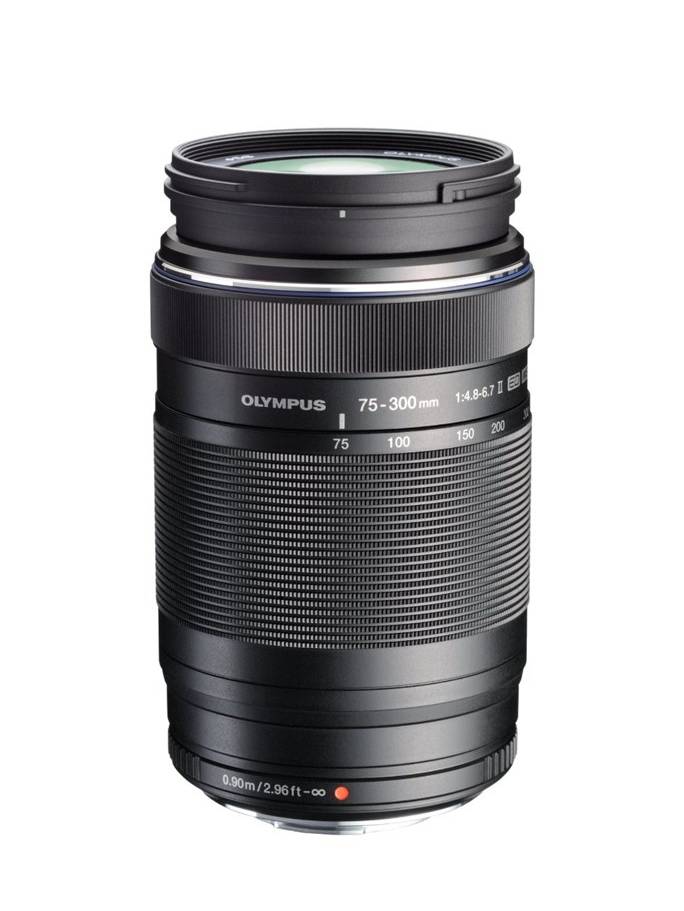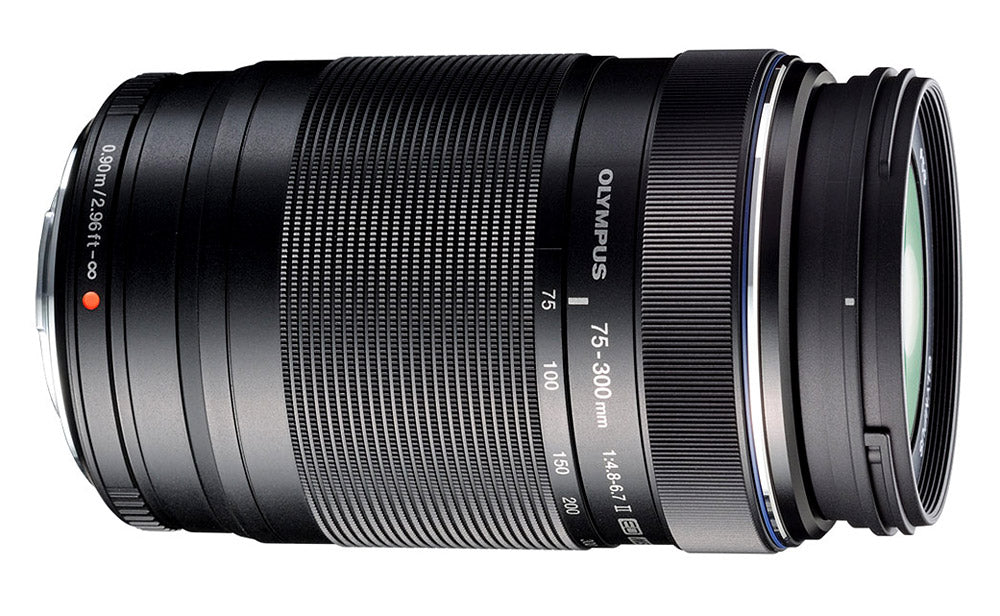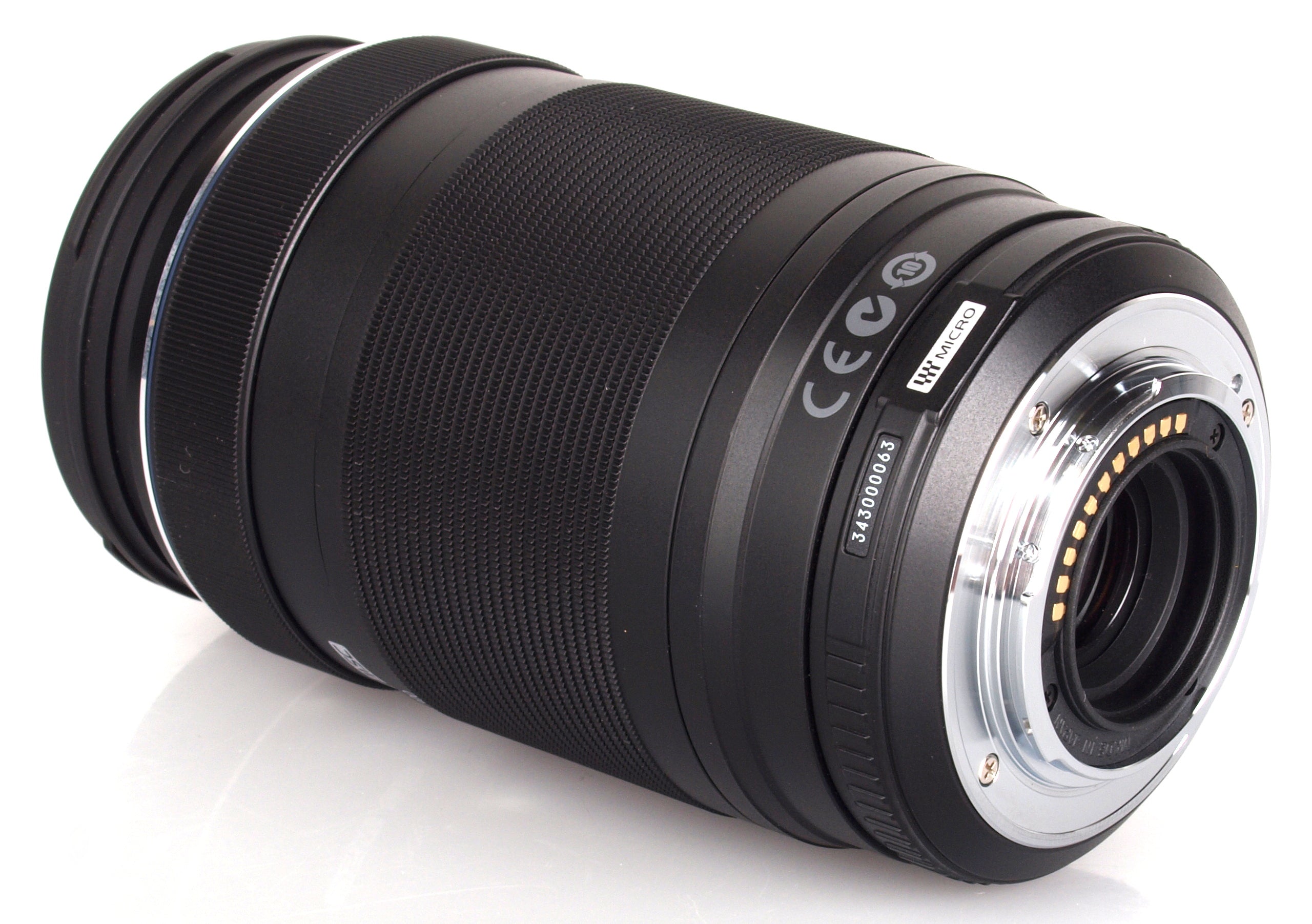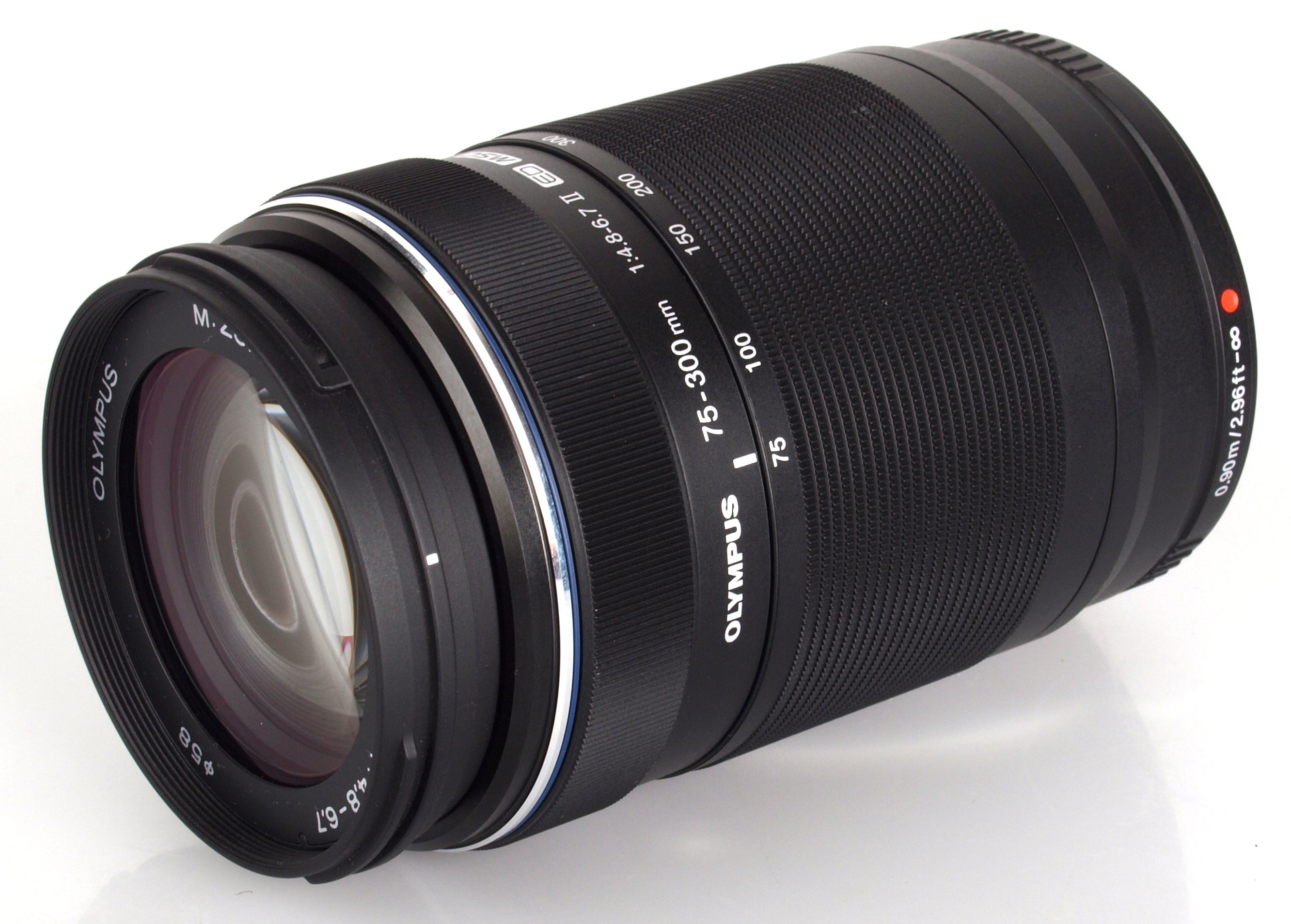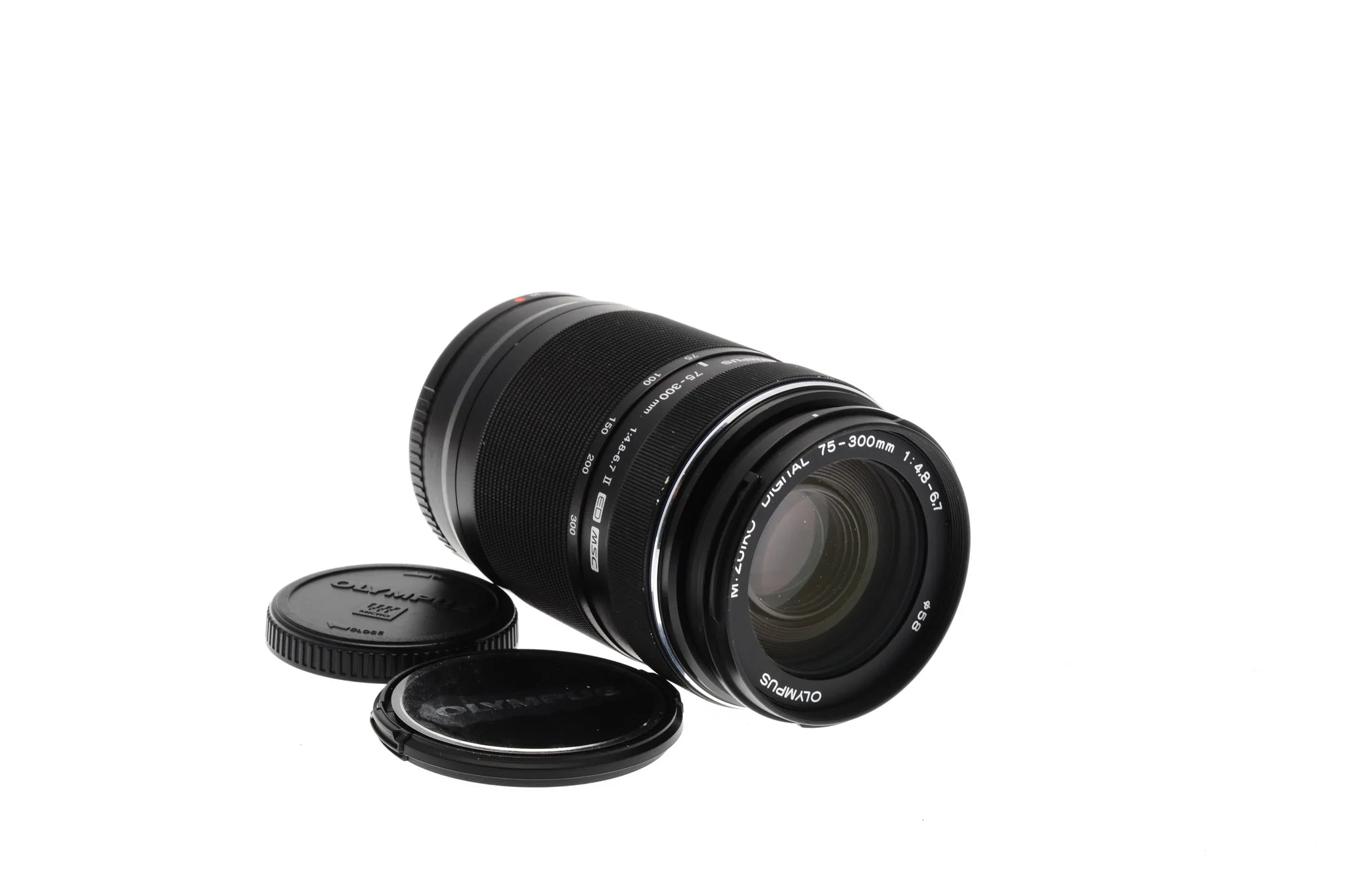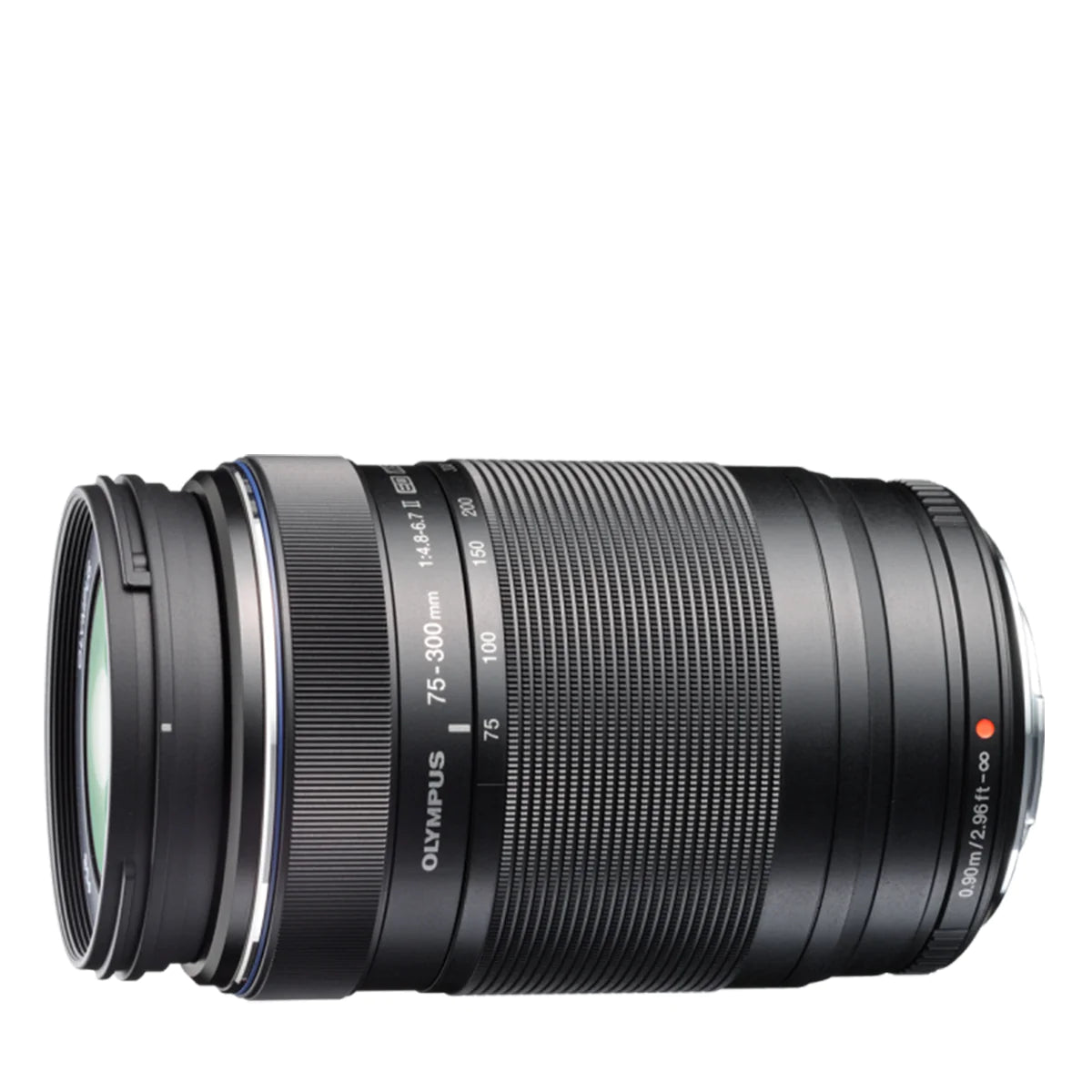Product Description
Olympus 75-300mm f4.8-6.7 II Lens - Black Lens
- Compatible with Micro Four Thirds mount
- Silent focus
- Circular aperture diaphragm
- Focuses from just 0.9 metres
- Extremely fast high-speed contrast AF
Get closer to your subject with the Olympus M.ZUIKO DIGITAL ED 75-300 mm f/4.8-6.7 II Telephoto Zoom Lens.
Compatible with Micro Four Thirds system cameras, this 75-300 mm lens offers an equivalent range of 150-600 mm on a 35 mm film camera to deliver a long focal length for zooming in on faraway subjects.

Ideal for sports and wildlife This 75-300 mm lens features an extremely fast autofocus function with MSC technology for taking rapid-fire shots. The unique screw drive mechanism is especially quiet when focusing, ideal when shooting movies. Increase your shooting capabilities with the Olympus 75-300mm f4.8-6.7 II Lens. Designed with an ultra-fast autofocus function using MSC technology, you can capture rapid-fire shots with precision and speed. The unique screw drive mechanism ensures quiet and smooth focusing, perfect for both photography and videography.

This 75-300 mm Lens features a circular aperture diagram which is ideal when blurring the background, offering smooth bokeh. Reflections are reduced with the ZERO (Zuiko Extra-low Reflection Optical) coating, for clearer images without ghosting.

Compact and lightweight, the high power Olympus M.ZUIKO DIGITAL ED 75-300 mm f/4.8-6.7 II Telephoto Zoom Lens is an ideal addition to your kit. Capture the world in stunning detail with unparalleled precision. The Olympus 75-300mm f4.8-6.7 II Lens delivers exceptional telephoto capabilities in a compact and lightweight package, making it the perfect addition to any professional photography kit. With this lens, you'll have the power to capture even the most distant subjects with ease, all while maintaining impeccable sharpness and clarity in your shots. Perfect for the photography expert seeking the best in image quality and versatility.

